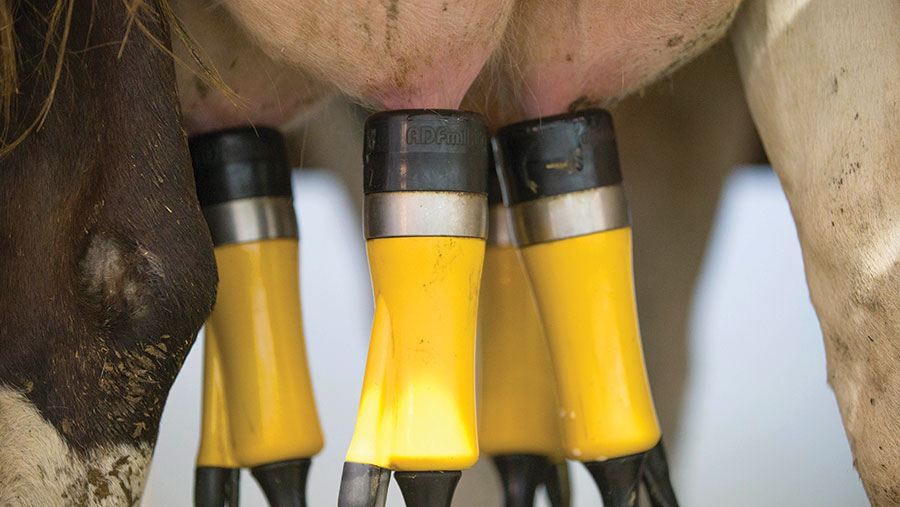Coronavirus: 4 tips for dairy farmers hit by slump in milk demand
 © Tim Scrivener
© Tim Scrivener The coronavirus pandemic means dairy farmers supplying milk to food service have been hit hard by a slump in demand due to the lockdown.
Farmers supplying processors Freshways, Yew Tree Dairy and Meadow Foods, are now all being paid on an A/B pricing structure.
This means a percentage of their milk will be paid at a heavily discounted rate, based on spot prices, which are currently very low and way below cost of production.
So, what can those hardest hit businesses do to survive the next few months?
See also: Coronavirus: Mart sanctions pressure dairy cattle values
Neil Wilson of SAB Advisory, Hefin Richards of Rumenation Nutrition Consultancy, and Owen Atkinson, from Dairy Veterinary Consultancy, joined a recent AHDB webinar to offer some solutions.
1. Reduce input costs and manage cash
- Work out what shortfall of cash you may have by doing a budget
- Stop any non-essential expenditure and minimise drawings. Things to look at include school fees, investments or memberships
- Sell surplus animals, forage and equipment you don’t need or use on a regular basis
- Furlough staff if workload allows
- Approach creditors to see if you can extend payment terms
- Call HP companies to see if you can get a capital holiday repayment
- Approach your bank for support – they will need to see a track record of your business; cashflow projections (for at least the next three-to-six months, ideally one year); you will need to demonstrate cost reductions (short and long-term) and know your cost of production (COP) or breakeven milk price.
- Be clear what you need. Is it more cash or a capital holiday on a loan?
- Farm businesses are eligible for Coronavirus Business Interruption Loans (CBILS), but be aware that interest rates are high.
2. Minimise production of B litres
These litres will be significantly below cost of production (under 10p/litre) so producing them and hoping for the best is not a good strategy.
- Target unprofitable animals – dry off low yielders, cull cows (chronic mastitis, empty or lame animals) or put prospective culls out to grass to reduce feed costs
- Stop serving cows more than 200 days in milk (DIM)
- Can you sell fresh calvers?
- Graze a proportion or the whole herd to help reduce feed costs
- If you milk three times a day, drop back to twice.
3. Reduce feed costs
- Consider cutting back concentrate levels for mid/late lactation or pregnant cows
- Cut back on higher protein feed like soya and rapeseed which have increased in price
- Remove supplements, fats and some minerals – maintain the basic minimum especially magnesium if you’re grazing cows to prevent staggers
Remember, strategies will be specific to your farm infrastructure and systems:
- Housed: Can you split groups into early and mid-lactation and reduce concentrate? Could late lactation cows (last 100 DIM) be offered grass or silage only? If you have a limited grazing area and calve year-round, could you just graze cows once they are confirmed in-calf? Can you feed poorer quality forage now and save better silage for later?
- Grazing: Consider targeting lower protein (14-16%) concentrate at early lactation and open cows?
- All: Consider feeding calves whole milk to save on buying milk powder. You must ensure this milk comes from Johne’s-free animals or is pasteurised. Identify negative cows that have been subject to Johne’s testing for a number of lactations. Don’t use waste milk.
4. Avoid short-termism
Short-term cost savings could cost you dearly by affecting long-term business viability. Don’t:
- Stop vaccinations and health testing
- Cut back feed to youngstock
- Neglect fertility or lameness prevention
- Turn cows out to graze if you don’t have the correct cow type or set-up
- Let early lactation cows lose condition and decrease their chance of getting pregnant
- Let dry cows get fat if they will be dry for an extended period, as this will cause issues at calving.
